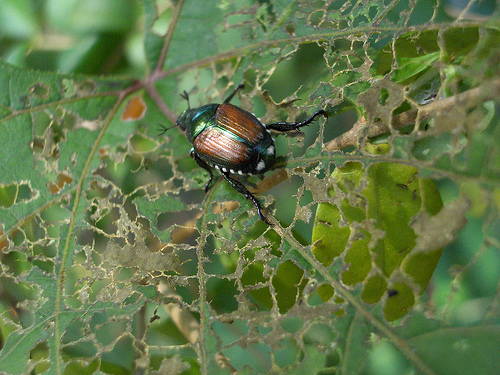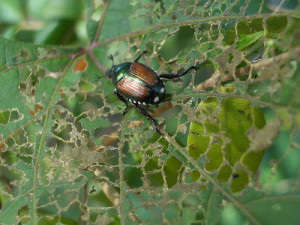If you have holes appearing on the leaves in your garden and you notice coppery and green insects on your plants, they are likely a type called the Japanese beetle. These hungry bugs love to munch their way through foliage, wreaking havoc in their wake.
What Problems Do Japanese Beetles Cause?
As you can see in the photograph above, Japanese beetles will chew holes in the leaves of your plants. The damage can be so extensive that the entire leaf is skeletonized. If much of the foliage is destroyed in this manner, it can be difficult for the plant to photosynthesize and get the energy that it needs for proper growth.
How Can You Get Rid of Japanese Beetles?
Treating for grubs can help stop an influx of these pests if done at the correct time. This kills the larvae before it has a chance to grow up, greatly lessening the chances of problems in the future.
One of the most successful ways to lessen the numbers of these insects in your garden (since it is very difficult to get rid of them completely) is to simply find them on your plants and drop them into a solution of soapy water, making them drown. This method is very inexpensive and easy to use. You can also spray them with insecticidal soap.
You may have seen Japanese beetle traps for sale and thought that they could be helpful in this situation. Unfortunately, they may end up worsening the problem. While they do attract and catch beetles, they do it by using pheromones. Frisky bugs will head towards your garden and you will likely end up with more than if you had avoided the traps.
How do you handle Japanese beetles in your landscape?
Image by Vik Nanda under a Flickr Creative Commons Attribution-ShareAlike License




